Mera Peak, Nepal’s third-highest trekking peak, offers adventure-seekers an unparalleled climbing experience. Nestled within the stunning Sagarmatha National Park, this 6,476-meter challenge rewards climbers with breathtaking panoramic views of the Everest massif and surrounding Himalayan giants. Spanning 14 to 20 days, the expedition requires proper gear, experienced guides, and careful acclimatization to the high altitude. While the best seasons are spring and fall, the journey promises an unforgettable test of endurance and grit. Those seeking to push their limits and witness Nepal’s majestic landscapes would do well to consider this iconic climbing adventure.
Key Points
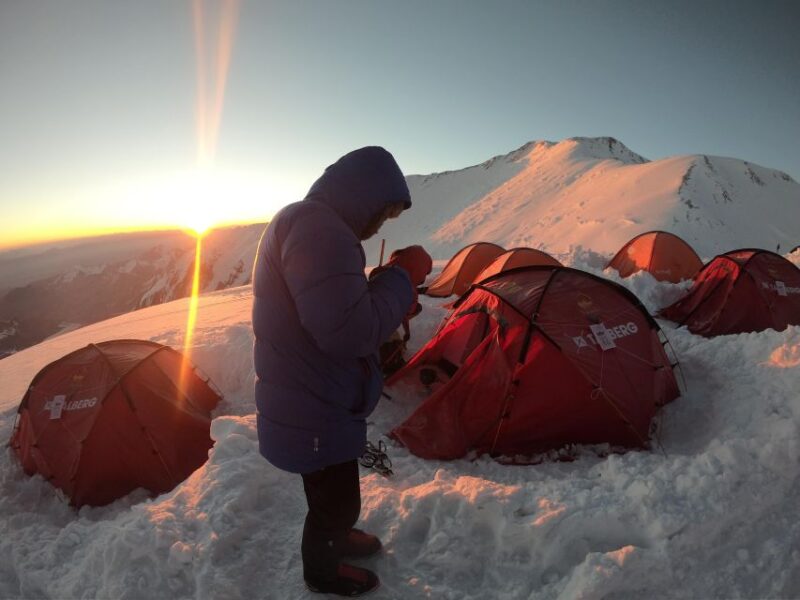
- Mera Peak is a popular trekking and climbing destination in Nepal’s Sagarmatha National Park, offering panoramic views of Everest, Lhotse, Makalu, and Cho Oyu.
- The typical Mera Peak expedition itinerary starts with a scenic flight to Lukla and follows the classic Everest Base Camp route through Sherpa villages.
- Climbers require experienced guides, proper mountaineering equipment, and specialized gear to tackle the technical sections and mitigate altitude sickness risks during the summit push.
- The best climbing seasons for Mera Peak are the pre-monsoon (March-May) and post-monsoon (September-November) periods, when weather conditions and snow quality are favorable.
- Along With the climbing experience, the Mera Peak expedition offers opportunities for culture, monastery visits, and scenic day hikes to explore the surrounding landscapes.
Overview of Mera Peak
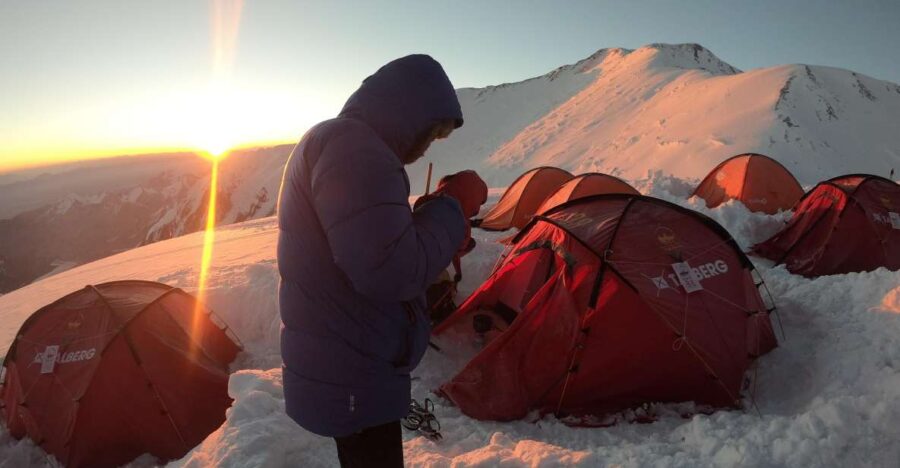
Mera Peak, a 6,476-meter snow-capped mountain located in Nepal’s Sagarmatha National Park, stands as a popular trekking destination for adventurous climbers seeking stunning Himalayan vistas.
This snow-clad beauty offers breathtaking views of iconic peaks like Everest, Lhotse, Makalu, and Cho Oyu.
The 14-day expedition from Kathmandu requires experienced guides, proper logistics, and specialized climbing gear. Climbers must be physically fit and prepared for the high-altitude challenges.
The best seasons for Mera Peak climbing are the pre-monsoon months of March-May and the post-monsoon period of September-November when weather conditions are typically favorable for a successful summit.
You can also read our reviews of more tours and experiences in Koshi Zone.
Itinerary and Trekking Experience
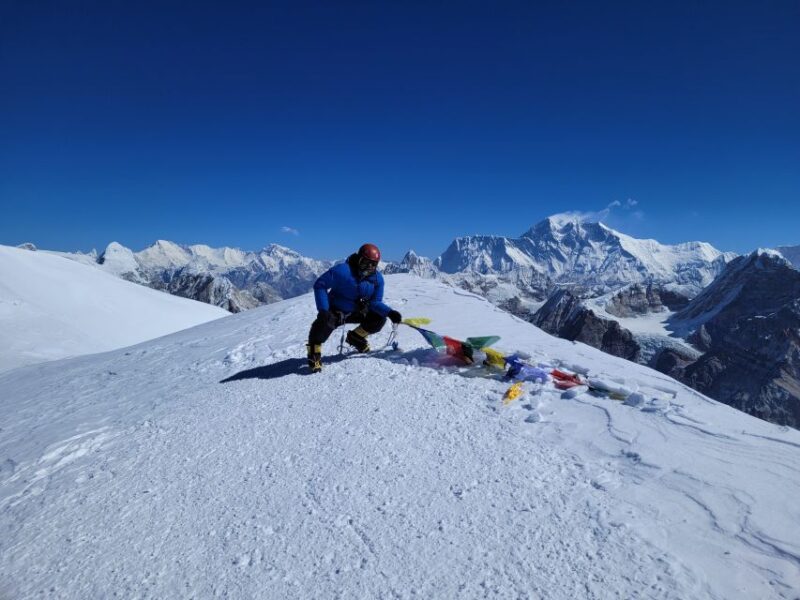
The typical Mera Peak climbing itinerary begins with a scenic flight from Kathmandu to Lukla, marking the start of the trekking journey.
Climbers then follow the classic Everest Base Camp route, passing through Sherpa villages and terraced fields. The trek offers stunning views of the surrounding Himalayan peaks, including Everest, Lhotse, Makalu, and Cho Oyu.
Summit day starts with an early morning push to the top, where climbers are rewarded with panoramic vistas.
The entire expedition typically lasts 14 to 20 days, depending on weather conditions and the chosen itinerary.
Optional activities like guided tours, hiking, and sightseeing can be incorporated into the expedition for a more well-rounded experience.
Accommodations and Facilities
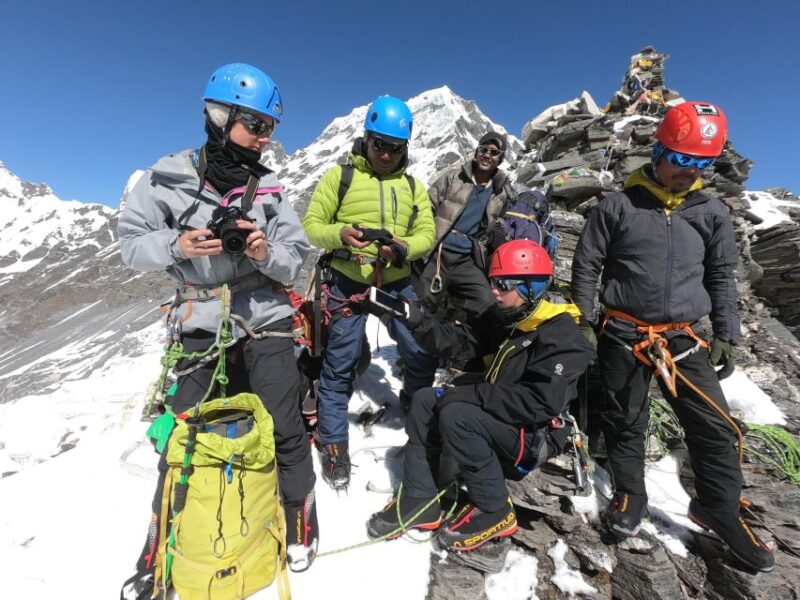
The package includes accommodations at a 3-star hotel in Kathmandu and tea houses during the trek, with tented accommodation provided during the climbing portion of the expedition.
Mountaineering equipment, such as ropes, ice axes, and crampons, are provided as part of the group gear.
The expedition also includes a licensed Sherpa guide, who carries a medical kit for emergencies.
Climbers should expect the following amenities during the trek:
-
Basic but comfortable tea house lodging with shared facilities.
-
Tented camps with sleeping bags and foam mattresses during the climb.
-
Nutritious meals prepared by the trek staff during the entire expedition.
-
Access to porters to carry group and personal equipment.
Expedition Costs and Inclusions
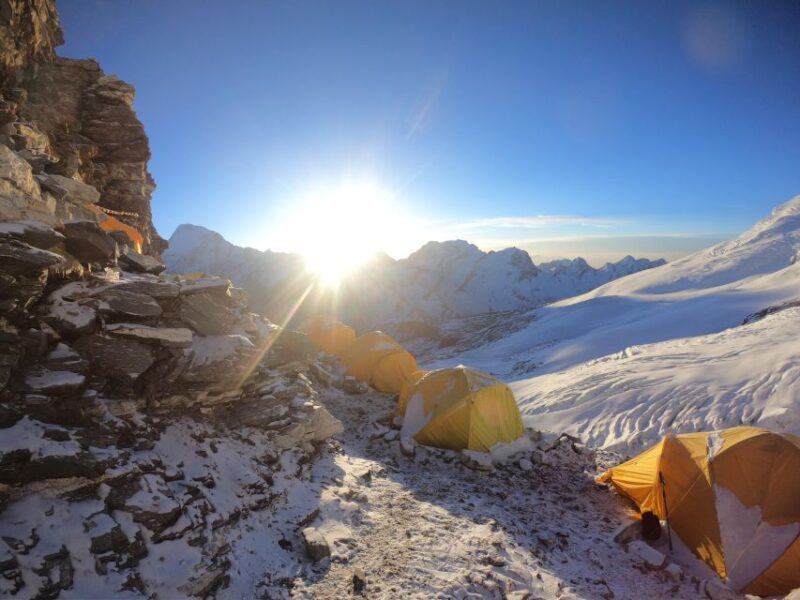
The Mera Peak climbing package starts at SEK 26,828 per person and includes all meals during the trek, national park entry permits, and domestic flights. Accommodation is provided in a 3-star hotel in Kathmandu, tea houses during the trek, and tented camps during the climb. The package also includes group mountaineering equipment and a licensed Sherpa guide with a medical kit.
| Inclusions | Details |
|---|---|
| Meals | All meals during the trek |
| Permits | National park entry permits |
| Flights | Domestic flights |
| Accommodation | 3-star hotel, tea houses, tented camps |
Climbers may incur additional costs for international airfare, excess baggage, and personal expenses. Tips for guides and porters are optional but appreciated.
More Great Thing To Do NearbySafety Considerations

Climbing Mera Peak requires undertaking the expedition with a licensed agency and experienced guides to ensure safety throughout the journey.
Essential preparatory steps include:
-
Obtaining travel and rescue insurance to cover any emergencies during the high-altitude trek.
-
Packing the appropriate mountaineering gear, such as crampons, ice axes, and ropes, to navigate the technical sections of the climb.
-
Booking accommodations and permits well in advance due to the peak’s popularity, which can get booked up quickly.
-
Ensuring physical fitness and acclimatization to handle the challenges of high-altitude trekking and climbing.
Preparation and Gear
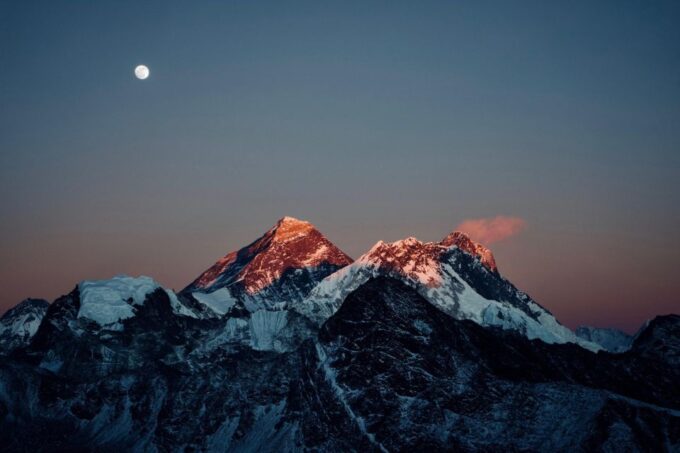
Adequate preparation and proper mountaineering gear are essential for a successful and safe Mera Peak climbing expedition. Climbers must ensure they’ve the necessary technical equipment, including crampons, ice axes, and ropes, to navigate the technical sections of the ascent.
Plus, they should invest in high-quality clothing and accessories designed for cold, windy, and snowy conditions at high altitudes. Thermal base layers, insulating mid-layers, and weatherproof outer shells are crucial. Boots with sturdy soles and ankle support are also a must.
Proper hydration, nutrition, and medication should be planned for the high-altitude environment. Trekkers should train extensively and acclimatize properly to mitigate the risks of altitude sickness.
With the right preparation and gear, Mera Peak can be conquered safely.
Trekking Seasons and Schedules
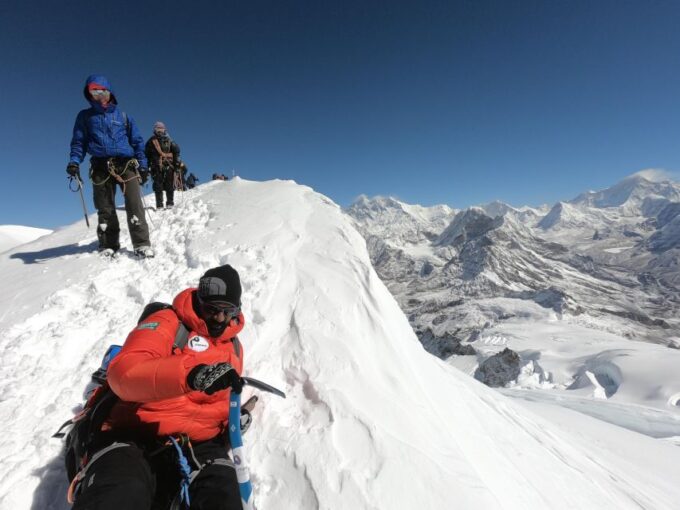
Timing plays a crucial role in Mera Peak climbing expeditions, with the best seasons offering optimal conditions for a successful ascent. The peak is typically climbed during the pre-monsoon season from March to May, or the post-monsoon season from September to November.
These periods provide:
-
Clear skies and stable weather patterns, ensuring good visibility and safer conditions.
-
Moderate temperatures, ranging from -10°C to -5°C at the summit.
-
Firm snow and ice, making for more secure footing and safer traverses.
-
Fewer crowds, allowing for a more serene and personal experience.
The entire expedition typically lasts between 14 to 20 days, depending on the chosen itinerary and weather conditions.
Optional Activities
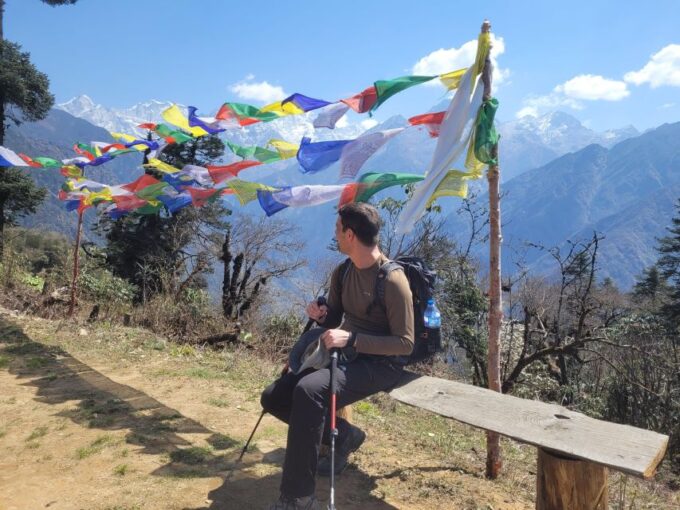
Along With the main trekking and climbing activities, Mera Peak expeditions often feature a range of optional excursions that allow participants to further enjoy the Himalayan culture and landscapes. Guided tours can be arranged to visit nearby Sherpa villages, where visitors can gain insights into the local way of life and observe traditional agricultural practices. Hikers may also choose to embark on day trips to explore scenic viewpoints or visit sacred monasteries, enhancing their overall Himalayan experience. These optional activities cater to a variety of interests, ensuring a well-rounded and enriching expedition for all participants.
| Optional Activities | Description |
|---|---|
| Sherpa Village Tours | Gain insights into local culture and traditions |
| Monastery Visits | Discover sacred Himalayan sites and architecture |
| Day Hikes | Explore scenic viewpoints and landscapes |
| Cultural Immersion | Interact with local communities and observe daily life |
| Photography Excursions | Capture the stunning Himalayan vistas and wildlife |
Frequently Asked Questions

What Is the Difficulty Level of Mera Peak Climbing?
The difficulty level of Mera Peak climbing is considered challenging. It requires extensive mountaineering experience, physical fitness, and the ability to handle high-altitude conditions. Climbers need specialized equipment and prepared for the rigors of the trek and ascent.
What Is the Success Rate for Mera Peak Expeditions?
The success rate for expeditions to Mera Peak typically ranges between 70-85%. However, this can vary depending on factors like weather conditions, group size, and climbers’ experience levels. Proper preparation and guidance from experienced Sherpa guides are key to maximizing the chances of a successful summit.
Can I Climb Mera Peak Without Previous Mountaineering Experience?
While it’s possible to climb Mera Peak without previous mountaineering experience, it’s not recommended. Climbers should have technical skills and be prepared for the high-altitude challenges. It’s best to join an expedition with experienced guides to ensure a safe and successful summit attempt.
Are There Any Medical Facilities Along the Mera Peak Route?
Along the Mera Peak route, there are limited medical facilities. Trekkers should have access to a portable first aid kit and rely on their experienced guides, who typically carry medical supplies. However, more advanced care may only be available at the start or end of the trek.
Can I Extend My Mera Peak Trek to Visit Other Regions in Nepal?
Absolutely, travelers can extend their Mera Peak trek to visit other regions in Nepal. Many choose to continue on to destinations like Everest Base Camp, Annapurna Circuit, or Langtang Valley, allowing them to experience more of Nepal’s stunning Himalayan landscapes.
Recap
Mera Peak offers a thrilling challenge for experienced trekkers.
The expedition’s stunning views of Mount Everest and its neighbors make the arduous climb worthwhile.
With proper preparation, climbers can conquer this Nepalese peak and enjoy an unforgettable high-altitude adventure.
Whether during the best spring or autumn seasons, Mera Peak promises an unforgettable experience for mountaineering enthusiasts.
You can check if your dates are available here:More Tour Reviews in Koshi Zone
Not for you? Here's more things to do in Koshi Zone we have recnetly reviewed
- 4 Best Tours In Koshi Zone
- 4 Best Helicopter Flights And Tours In Koshi Zone
- 4 Best Hiking And Trekking Tours In Koshi Zone
- Private Luxury Everest View 5 Days Heli Tour
- Everest Base Camp Overnight Stay Trek – 15 Days
- Kathmandu Everest Helicopter Tour With Guranteed Landing
- From Lukla: Mera Peak (6,476m) Climbing
- Island Peak (6,189m) Climbing
